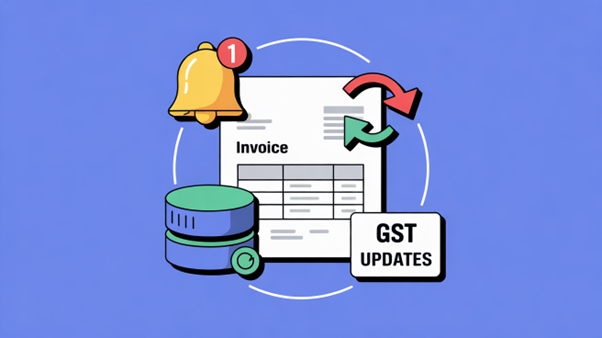The discussion that opened my eyes -
At the Global Fintech Fest 2025 in Mumbai, I was chatting with a few CFOs, CAs, and finance professionals during a post-session coffee break. The talk naturally drifted toward GST compliance — a topic that never really leaves our tables.
One CFO mentioned something that caught my attention.
“We’ve been facing repeated GST mismatches even though all our invoices are uploaded correctly. Eventually, we found the real problem — wrong HSN codes.”
Everyone at the table nodded in recognition. It was a common pain point. Incorrect HSN (Harmonized System of Nomenclature) codes are small mistakes that can create big compliance issues — from misreporting in GSTR-1 to audit red flags and penalties.
That discussion made me realize how many businesses treat HSN classification as a “fill-in-the-blank” task — when in reality, it’s a critical compliance decision that impacts tax rates, returns, and reputation.

The root of the problem — Wrong classification at source
Most HSN issues start right at the product master data level.
A small misclassification when setting up a new product or service gets carried forward to hundreds of invoices.
For example:
- A machinery part classified under general hardware instead of industrial components
- A consultancy service tagged under wrong SAC code
Even if the error was unintentional, it can lead to:
- Wrong tax rate applied
- Incorrect GST return data
- Department notices or even penalties for misreporting
CFO Takeaways:
- Always map each product/service correctly as per GST HSN directory.
- Update master data regularly, especially when new products are introduced.
- Use Tally ERP’s HSN/SAC validation and auto-classification suggestions to avoid manual errors.

The domino effect — How one wrong code impacts everything
A single wrong HSN code can cause a chain reaction across your accounting and compliance system:
- Tax rate mismatch: Incorrect HSN = wrong GST rate = wrong tax collected or paid.
- Return reconciliation errors: GSTR-1 vs GSTR-3B mismatches.
- Customer disputes: Buyers may lose input tax credit.
- Audit triggers: Repeated mismatches can attract scrutiny or penalties.
One CA at the event mentioned how a client had to pay ₹2.4 lakh in penalties and interest because of a single incorrect HSN that went unnoticed for two quarters.
CFO steps to prevent this:
- Regularly reconcile your HSN codes with GST portal reports.
- Use auto HSN mapping in Tally ERP to ensure consistency between purchase and sales data.
- Schedule a monthly HSN audit review for high-value invoices.

Overlooking service HSN Codes — The silent mistake
While product-based businesses usually pay attention to HSN codes, service providers often neglect SAC (Service Accounting Codes).
A digital marketing firm once discovered their SAC code was outdated — resulting in a different GST rate being applied for months. By the time it was fixed, they had to correct multiple returns.
CFO Reminders:
- Don’t assume service codes remain the same — check SAC updates quarterly.
- Configure SAC validations in your Tally ERP to flag mismatches early.
- Ensure every new service offering is mapped correctly in the ERP.
Ignoring periodic updates from GST council
HSN and SAC codes are not static. The GST Council periodically updates or reclassifies them, and missing these changes can lead to misreporting.
Many businesses use outdated code lists that don’t match the current GST schema. When the data is uploaded, the GST portal flags errors or rejects the return.
CFO Best Practices:
- Subscribe to GST notification updates or use software like Tally ERP that syncs the latest HSN data automatically.
- Recheck your entire product master whenever rate changes or code revisions are announced.
- Maintain an internal change log for every HSN or SAC update applied in your system.

The audit angle — When small mistakes become costly
During a GST audit, mismatched HSN data is one of the first things examiners look for.
Why? Because it’s an easy way to spot inconsistencies in tax rates or returns.
Even if there’s no intent to evade tax, inaccurate classification can still attract penalties under GST provisions.
For CFOs, this is more than a compliance issue — it’s about maintaining data integrity and trust.
CFO’s Audit Checklist:
- Run a Tally HSN Summary Report every quarter.
- Match tax rates applied vs GST portal rates.
- Keep documentation for all classification decisions (especially for ambiguous items).
Conclusion: The Small Code That Carries Big Consequences
As I left the discussion at GFF 2025, one thought stayed with me — HSN codes may look like small details, but they can make or break your compliance standing.
Getting them right means fewer notices, smoother reconciliations, and cleaner audits.
Getting them wrong can mean penalties, rework, and damaged credibility.
CFO’s Quick HSN Control Plan:
- Review your product/service HSN setup quarterly.
- Validate codes through Tally ERP’s automated tools.
- Stay updated on GST Council changes.
- Train your finance team to understand classification basics.
- Reconcile HSN and tax rates regularly.
In the end, it’s simple — accuracy in small things keeps big problems away.


















